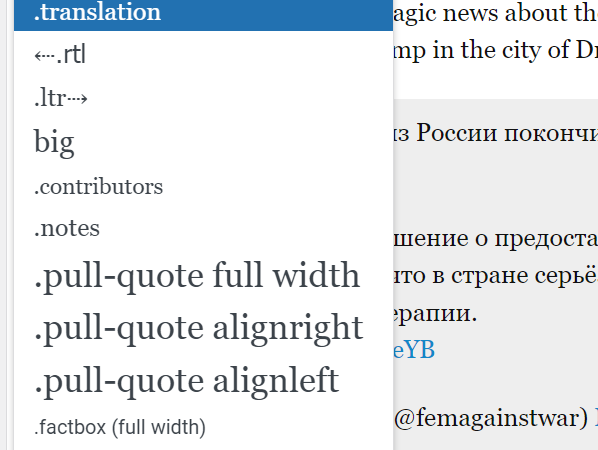To aid our writers and editors in their work of producing quality, intersectional content, we have put together this series of WordPress tips and reminders. This series covers common challenges you might face in the writing and editing process and offers clear solutions complete with screenshots and links to examples.
This series is meant to supplement our existing guides and act as brief, easy-to-access explainer pieces. Please remember to see our WordPress Guide for a full explanation of our rules and posting process.
Sometimes our quotes are in a language other than the language of a post. In those cases, we always include the quote in the original language alongside a translation. Let’s say we’re translating from Russian into English.
Step 1: Paste the original Russian quote into the post.
Step 2: Select the Russian quote and then use the blockquote button to turn it into a quote.

Step 3: With your cursor just below the blockquote, translate the quote into English.
Step 4: Select the translation, and then on the formats menu, select .translation.
Note: Pay special attention to languages written from left to write such as Arabic.
When writing a piece, please make sure you are using language that is accessible to a general audience. That means refraining from overly academic words and phrasings, words or sayings that are especially regional or slang-like, or obscure words that might be difficult for non-native speakers.
When in doubt, feel free to consult your subeditor or the subediting team.





